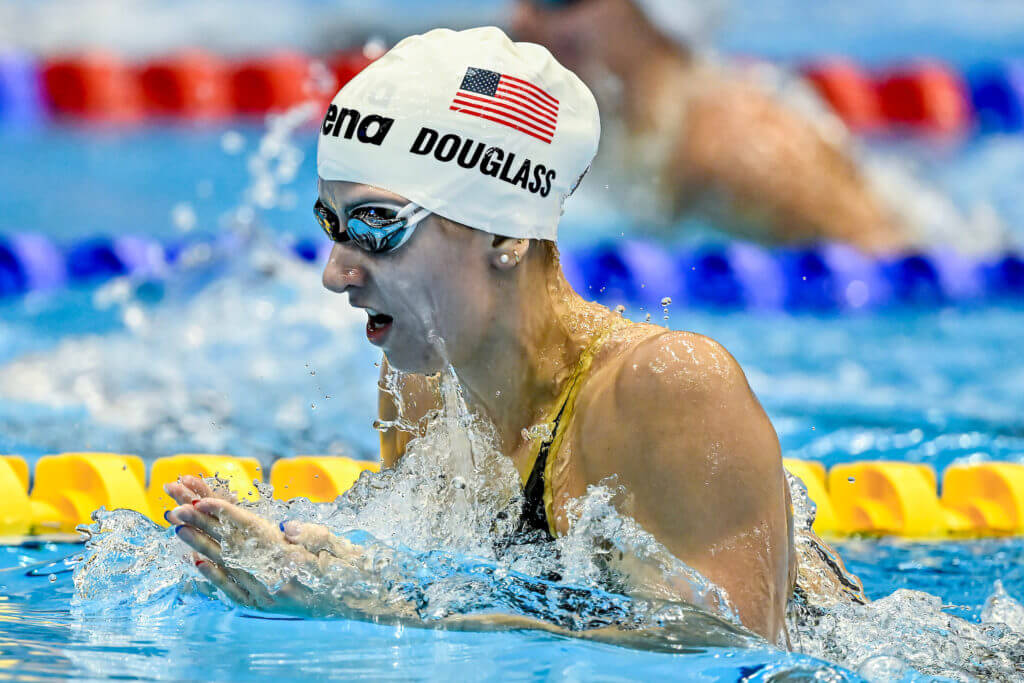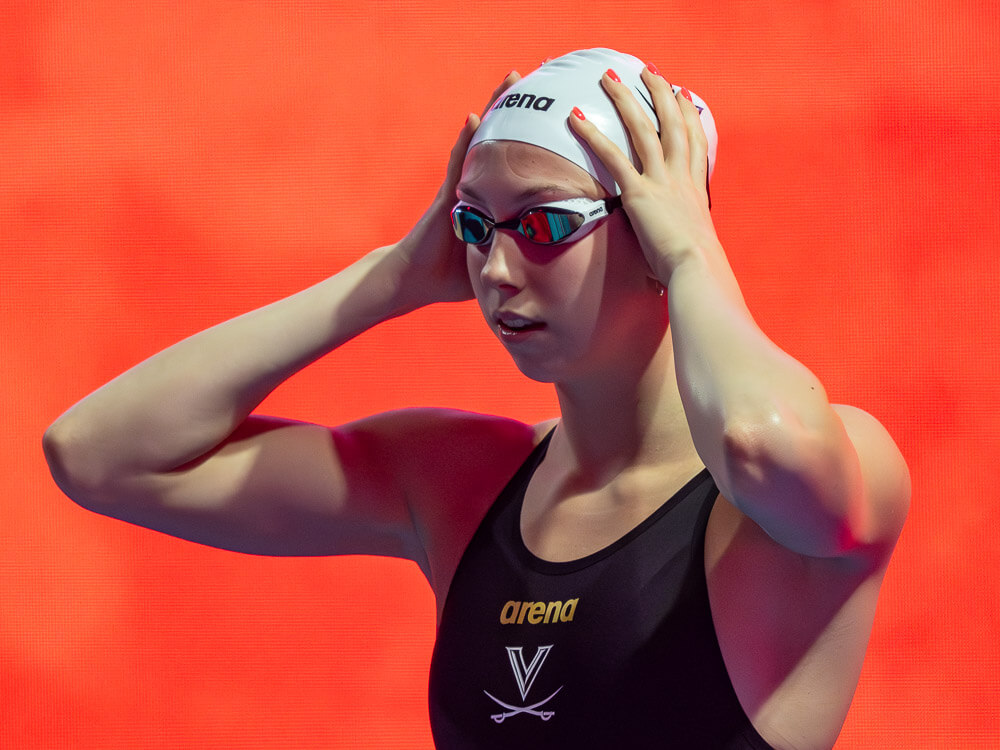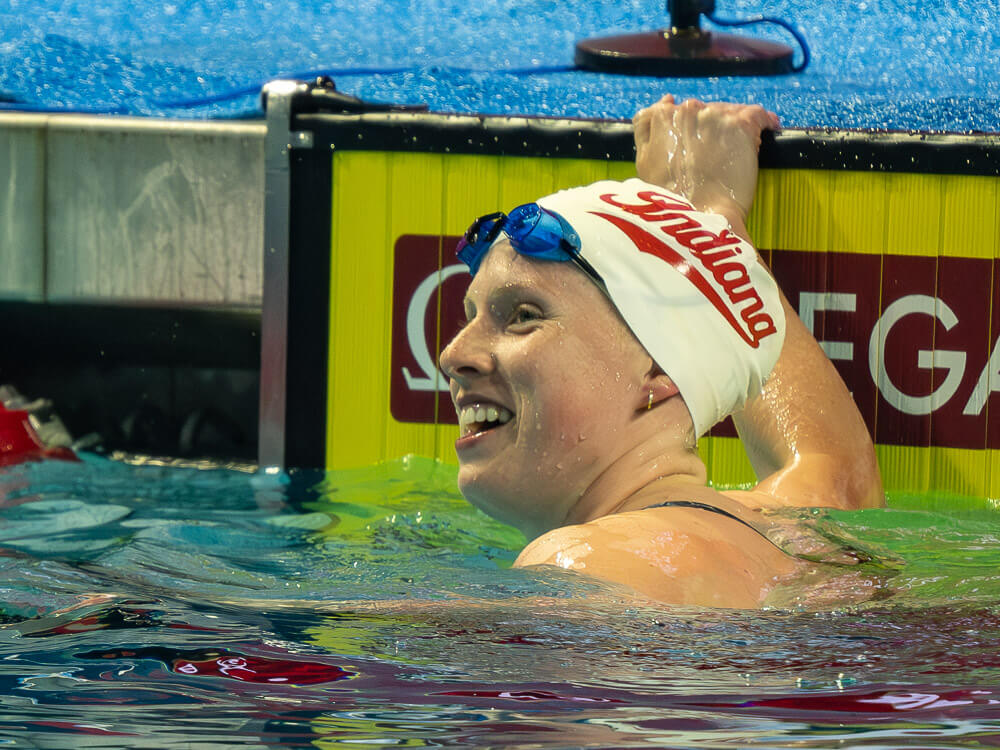U.S. Women’s Freestyle Relays Chasing Australia After Dominant Worlds But Medley Relay Strong (Full Relay Analysis)

Editorial content for the 2023 World Aquatics Championships is sponsored by FINIS, a longtime partner of Swimming World and leading innovator of suits, goggles and equipment. U.S. Women’s Freestyle Relays Chasing Australia After Dominant Worlds But Medley Relay Strong (Full Relay Analysis) As the American World Championships team departed Indianapolis in early July, the consensus was that the women had established their best freestyle relay groups in several years. Yes, Australia remained the strong favorites over 400 and 800 meters, but the gap had narrowed thanks to a pair of swimmers going under 53 in the 100 free at Nationals (not including last year’s World Championships individual bronze medalist) and a trio of teenagers clocking 1:56-low or better in the 200 free to set up a top-notch 800 free relay with Katie Ledecky. Favored? No way. But if everything clicked while Australia faltered, perhaps the Americans would be close enough to make it a race, at least in the 800-meter relay. Instead, the world saw Australia at its absolute best in Fukuoka as the Dolphins were clearly the world’s superior team for the first time at a major meet in over two decades. The Aussie women put together their best performances in both free relays, and combined with one disappointing result per relay for the Americans, each turned into a four-second blowout. The Aussies simply outclassed the rest of the world in the 400 free relay. Mollie O’Callaghan led off in the fastest 100 free time in the world at 52.08 while American Gretchen Walsh struggled to a 54.06, nine tenths off her best time and leaving the Americans almost two seconds behind. Shayna Jack, who emerged as the standout relay swimmer of the meet with five relay medals (three gold) plus an individual silver, split 51.69 on the second leg. It was not until the final leg that Kate Douglass pulled ahead of China to secure silver, and Douglass was the only American swimmer to out-split a single Aussie, her 52.28 surpassing Meg Harris’ 52.29 by a single hundredth. Gretchen Walsh played a key role on two U.S. relays in Fukuoka — Photo Courtesy: Peter H. Bick Making up that deficit in one year before the Paris Olympics would be a huge stretch. Remember that O’Callaghan is only 19 and Cate Campbell is attempting a return to international racing. But the Americans look like a solid No. 2, with China lacking standouts in the 100 free and Canadian star Penny Oleksiak coming off an injury-plagued two years. The best-case scenario here for the Americans is lining up four swimmers in the Tokyo final who have all broken 53 with one or two having reached 52-mid form, which Douglass has already accomplished. Walsh and Abbey Weitzeil are strong candidates to return to that position, and veteran Olivia Smoliga had an excellent year, splitting sub-53 in the Fukuoka final. Returns to form from a pair of 2022 standouts, Torri Huske and Claire Curzan, would be a big boost. As for the 800 free relay, the path is more clear, even if reaching Aussie levels is unlikely with O’Callaghan now owning the 200 free world record and Ariarne Titmus finishing just behind her teammate in the World Championships final. Jack has extended her range to the 200, and depth is no problem, with Brianna Throssell providing this year’s fourth split at 1:55.80. In their upset bid in Fukuoka, the Americans chose to swim their top three swimmers first and surprising allow newcomer Alex Shackell to anchor. Claire Weinstein had been expected to join Ledecky, Bella Sims and Erin Gemmell after Weinstein upset Ledecky in the 200 free at U.S. Nationals, but she was dropped from the relay after swimming almost two seconds off her best time in the individual event. So Shackell, whose best time was in the 2:01-range one month earlier, ended up entering the water with a lead of nine hundredths as she tried to hold off Titmus. Good luck? Unsurprisingly, Titmus crushed Shackell, recording the fastest split in history at 1:52.41 on the way to gold and a world record by two seconds. But now, the Americans enter the Olympic season with three teenagers having produced personal-best swims in a major final and another (Weinstein) with a flat-start best time of 1:55.26. Shackell and Gemmell were both making their first appearances on this relay while Sims has outperformed her best flat-start efforts two years in a row in this relay. Plus Ledecky, of course, always a force on this relay. Catching Australia is still unlikely but not implausible, not with the youth factor on the side of the United States. Lilly King is always a force for the Americans on the 400 medley relay — Photo Courtesy: Peter H. Bick But it was not all Australia in the women’s relays as the Americans got the job done in the 400 medley relay to conclude Worlds. Regan Smith edged Kaylee McKeown on backstroke The United States’ Lilly King, always excellent on relays, provided a breaststroke advantage of more than two seconds over Australian Abbey Harkin, which accounted for more than the 1.29-second margin of victory the Americans enjoyed here. Yes, that gap likely closes within a year as Australia expects Chelsea Hodges and/or Jenna Strauch to return from injuries that sidelined both this year, but there is potential elsewhere. Butterfly became a surprising concern for the U.S. during Worlds after a rough effort from Huske on the Americans’ mixed medley relay. So the U.S. coaches chose to replace her with Walsh, who was solid at 57.06 in her split but still well off her best time of 56.34. In comparison, Emma McKeon split 56.44 for Australia while China’s Zhang Yufei and Canada’s Maggie Mac Neil each went sub-56. But given that four Americans posted times between 56.14 and 56.61 at Nationals (Huske, Walsh, Douglass and Curzan, respectively), the expectation is that the Americans will be able to find a swimmer capable of matching or surpassing Australia on that leg, providing enough of an advantage for the Americans heading into the anchor leg. And in the medley, just like all the relays, it’s a two-team race. Yes, Canada’s Sophie Angus provided a surprisingly impressive 1:06.21 to help lift Canada into bronze-medal position, so maybe combined with Kylie Masse, Mac Neil and a returning Oleksiak the Canadians could break into the mix here, but the gap behind the Americans and Australians remains. So as the countdown to the Paris Games begins, let’s see what the Americans can do. Perhaps some of the young swimmers tossed straight into the pressures of a World Championships final (such as Walsh or Shackell) can channel some of their Fukuoka experience to close the gap on Australia and maintain the gap in the medley. The World Championships provided a first look at the battles to come.








